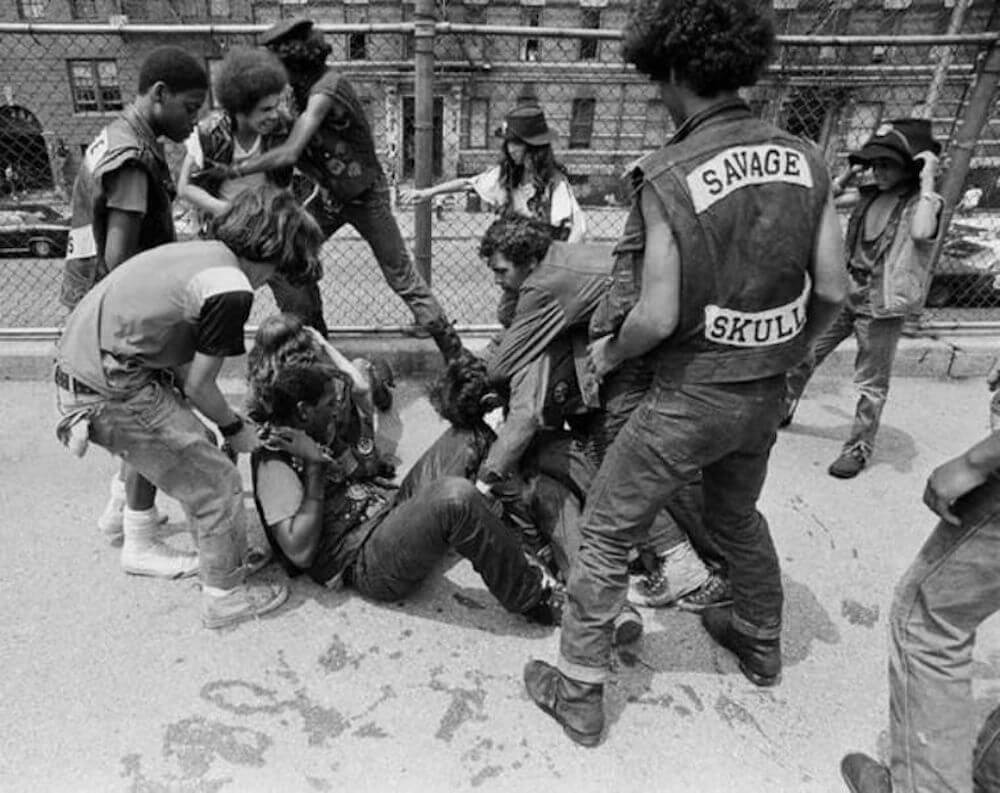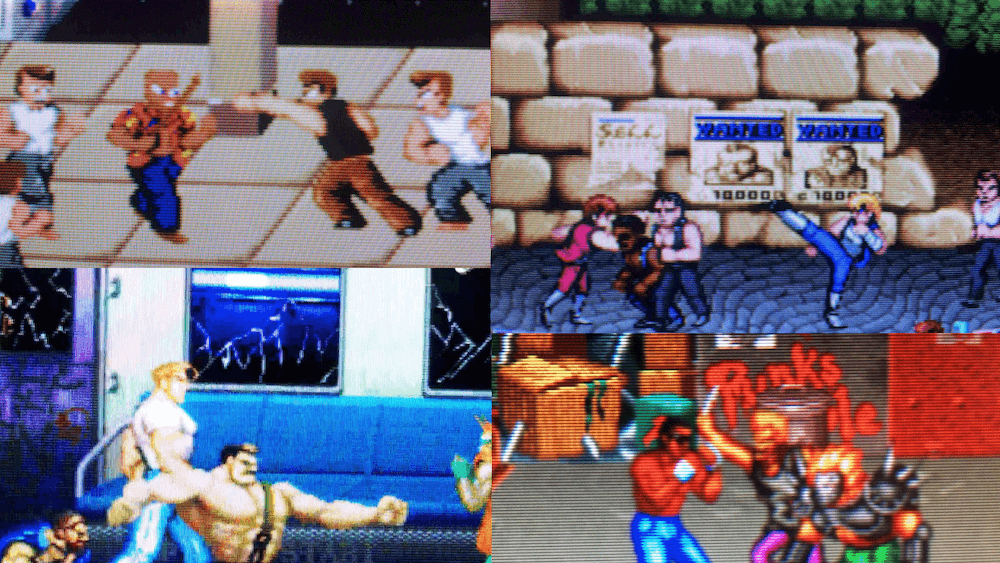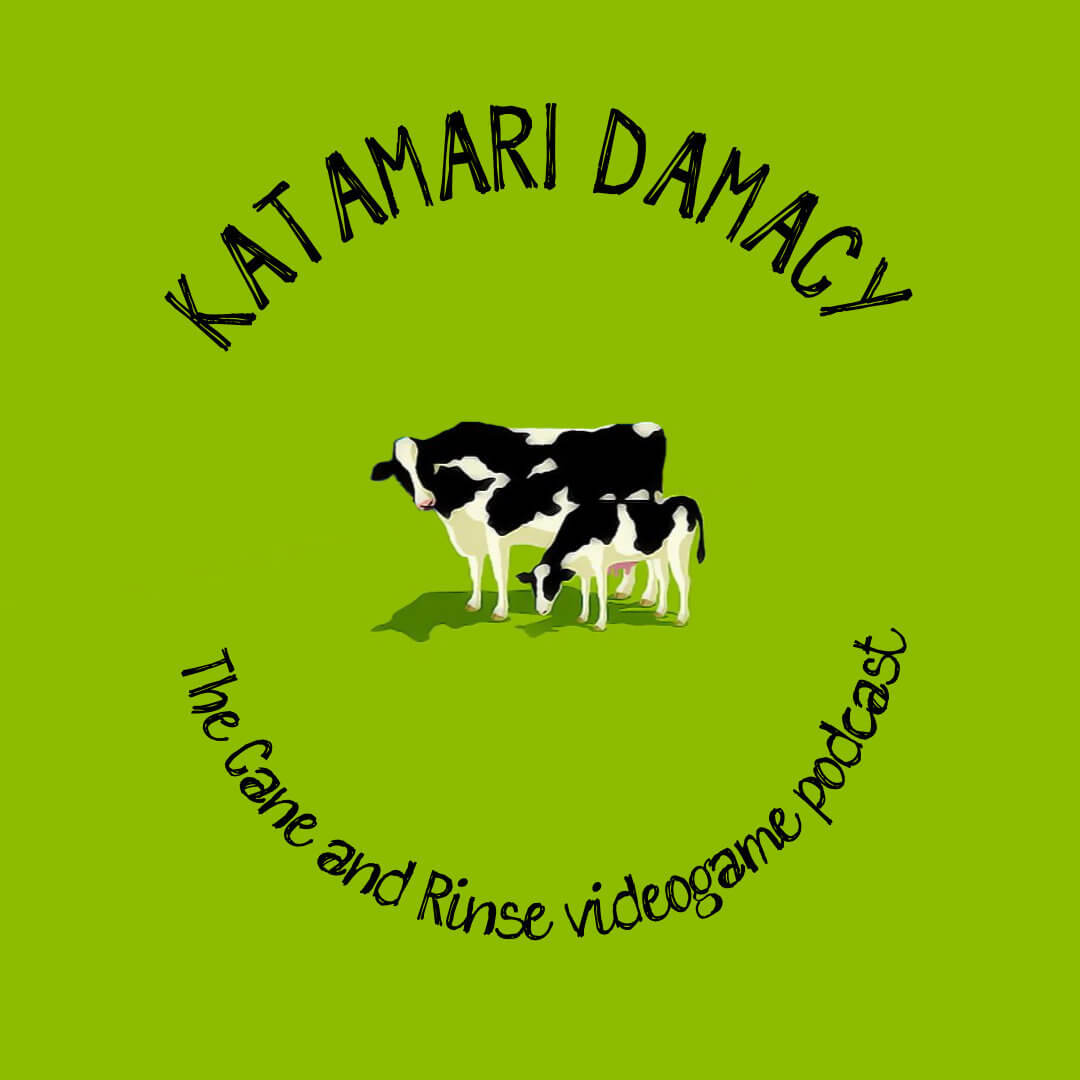When Technos brought their pioneering Yoshihisa Kishimoto designed 1986 beat ‘em up Nekketsu Koha Kunio-kun overseas, they changed its name to Renegade and altered the game’s graphics quite drastically, from representing a very local Japanese setting of brawling rival high school delinquents in uniforms to a gritty modern-day Western-styled mise-en-scene of baseball bats and knives carrying street punks warring in areas of metropolitan decrepitude.
And with that move, the arcade game developer not only introduced videogame enthusiasts worldwide to a new subgenre of melee action games in which players were now able to make use of the Z-axis and walk all around the screen as opposed to being stuck to a single plane but also put its stamp on the look, feel and general visual language that many games in this genre would come to share: from their own Double Dragon, to Capcom’s Final Fight, to Konami’s Crime Fighters and Violent Storm, to SEGA’s Streets of Rage and even modern tributes like Raging Justice by MakinGames.
In these games, justice needs to be doled out to ravenous and savage street thugs and conflicts are fought with bare fists, feet, bats, lead pipes, blades and chains and the odd, rare firearm. The dress code consists of sleeveless denim jackets, white tank tops, studded wrist bands and general punkish attire. Even in the late 1980s, let alone in 2020, this enduring theme of slum adorned urban wastelands, ruled by nihilistic, violent gangs of youths that picked fights for sport, seemed like nothing more than fantasy, straight out of movies like Class of 1984, RoboCop and, yes, the cult film that at least partially inspired them: 1979’s The Warriors, directed by Walter Hill.

Now when most people in the world think of US-based street-level gang violence, even when set in the 1980s, we tend to imagine Bloods, Crips and drive-by shootings or drug dealing corner crews fighting over merchandise and territory while making use of a variety of firearms and automatic weapons.
With the exception of LA gang culture to some extent, this type of criminal-on-criminal violence seems driven by business and financial gain, rather than by starting fights for the hell of it and conflicts certainly don’t find their resolution in large scale brawls, with combatants mainly relying on melee weapons or even just their fists and feet.
With that in mind, The Warriors, a retelling of Xenophon’s ancient world epic Anabasis at its core, with its flamboyantly dressed street gangs, among which a group called the Baseball Furies, decked out in NY Yankees athlete gear and clownish face paint and armed with – you guessed it – baseball bats, appears like a fantastical and farcical, maybe even naïve, representation of the real-world problem of gang violence in American cities.
The thing is, though, that The Warriors, despite its more outlandish and outrageous elements, doesn’t just find its origin in the 1965 novel by Sol Yurick of the same name that it’s based on, but also in a real-life phenomenon in terms of its set and – many of – its costume designs. Even some of the film’s beats echo events tied to said phenomenon that actually took place. It’s just that by the time Renegade hit the arcades of the U.S.A. and Europe, this very local phenomenon had pretty much died out and to much of the world, most likely including the game’s developers, it only ever existed in this visually striking piece of fantastical fiction, captured on film.

In the early 1970s, the city of New York was close to bankruptcy and in the south section of its Bronx borough, which was largely populated by people of Puerto Rican descent and African Americans, the despair was felt the most. Unrestrained urban planning in the ‘60s and failed development had turned the area in a desolate wasteland. Many households had to somehow make do without heating or water and the South Bronx held the world record for arson, with many a building going up in flames as a result of crooked entrepreneurs paying gasoline can carrying goons to make way for their own profitable idea of urban development.
The idealism of the 1960s, as symbolised by key figures like Malcolm X, Martin Luther King and even John F Kennedy, had died with their successive assassinations and with no concept of a future, many young denizens of the South Bronx started to form neighborhood-based ‘clubs’ that roamed the rubble filled streets and the pulverised and blackened abandoned buildings, looking for distractions and, well, trouble.

These gangs called themselves names like the Savage Nomads, Savage Skulls, Black Spades, Javelins and Reapers and fashioned their uniforms after those of biker clubs like the Hell’s Angels, with their names and insignia embroidered on the backs of sleeveless denim and leather jackets. The jackets were called colours and were often taken off defeated rival gang members and displayed as trophies in their hideouts. And yes, their attire very closely resembled those of gangs like the Warriors, the Riffs and the Rogues in the movie.
Those in their environment would describe these street gangs as savage, violent and outlaw-like, out to start mayhem with their bare hands and any tool laying around that could serve as a weapon. The use of firearms was not overly common as these groups were very much made up of society’s have-nots and their members were only to a relatively minor degree making money off illegal activities. A lot of the gangs were also known to have girls in their ranks that fought just as fiercely.
As this very local type of gang culture developed, the clubs became more structured, led by a president and a vice president, their conflicts with other gangs being led by a member with the warlord rank and negotiations being initiated by peace counsellors. Many gangs even had a controversially named ‘Gestapo’ division, made up of their most hardcore and loyal members, intended to beat the less disciplined into shape, keep them in line and keep them from terrorising their own neighbourhoods or starting conflicts on their own accord.
It didn’t take long for this culture to get adopted by youths in other ghetto areas of New York City as well, with gangs like the Assassinators and the Jolly Stompers getting established in Brooklyn and the Saigons getting formed in Harlem. At the height of this phenomenon, there existed more than 100 different gangs of the club type in the South Bronx alone.

Though the world at large was not overly aware of the specific street gang culture of the Bronx and how it developed, the notorious New York borough had become a worldwide symbol of urban decay throughout the 70s. The mere connotations of its name is probably what led Akinobu Abe and SEGA AM3 to name their melee weapon based versus fighting game set in a dystopian version of Tokyo ruled by street gangs Last Bronx, as late as 1996.
But the raw, impulsive violence of the brawling street gangs of New York City and the culture they had created didn’t truly outlive the decade. Before the president of the Black Spades started calling himself Afrika Bambaataa and renamed his gang the Zulu Nation – turning all their energy into helping to build the foundation of what became the, at that time, positive force of Hip-Hop music – gangs like the Savage Nomads already started turning over a new leaf, policing their neighborhood from violent junkies and outside troublemakers, with the Nomads specifically even protecting stores from rioters during the infamous New York City Blackout of 1977.
One of the original Bronx clubs, the more socially activist, but still feared and respected Ghetto Brothers, after their peace counsellor got maimed by Black Spades members, managed to gather the leaders of all the street gangs of the Bronx in the Madison Square Boys & Girls Club on Hoe Ave and get everyone to talk and sign off on a peace treaty, in a scene closely resembling the gathering that the ill-fated Cyrus called in the opening act of The Warriors.
By the time the film came out, many a Bronx gang member had traded their cut sleeves and their colours for b-boy garb like sneakers and track suits and the youths of the borough were no longer competing in terms of who had the best brawling skills, but in terms of what crew had the best break dancers, DJs, MCs or graffiti writers. And with the influx of crack cocaine in the 1980s, violence on the New York City streets became centered around the drug trade, which brought in more money and firepower.
New mayhem causing gangs like the Lo-Lifes and Decepticons that were active outside the economy of organised crime and illegal business did appear in Brooklyn, but for all intents and purposes, the outlaw-like clubs with their particular culture, structure and dress codes that originated in the South Bronx had disappeared.

So we’re back at the beginning, then: this very particular bit of history is why the imagery that was carried over from one Japan made beat ‘em up to the next one, well into the 1990s – after pioneering releases in the genre found their inspiration in a 1979 film that referenced a culture that at that point had already seized to exist – appeared to be nothing more than dystopian fantasy, painting a picture of metropolitan city streets presented as urban versions of Mad Max’s wastelands, in which heroes and villains wore sleeveless denim jackets and bats, pipes and knives were the weapons of choice, crime appeared less organised and guns seldomly entered the picture.
With this original South Bronx street gang culture having remained so local to the ghettos of New York and having enjoyed a relatively short life span, there weren’t many players of beat ‘em ups that were aware of the obscured raw and brutal reality that had indirectly given shape to the fantasy they were happy to engage with. From the Black Shadow Warriors, to the Mad Gears and the Skull Cross Gang, many of these collections of colourful videogame villains and the heroic brawlers that fight them owe their existence to the largely Hispanic and black ghetto youth that formed the real-life Assassinators, Savage Skulls, Black Spades, Soul Bachelors, Majestics, Ching-A-Lings, Javelins and Reapers that made the government abandoned neighbourhoods of 1970s New York City even less safe places to live or pass through.
Sources:
“80 Blocks from Tiffany’s” 1979, dir. Gary Weis
“Flyin’ Cut Sleeves” 1993, dir. Henry Chalfant & Rita Fecher
“Streets of New York” 2009, dir. Alan Bradley a.k.a. Al Profit
“Rubble Kings” 2010, dir. Shan Nicholson
A life time of being exposed to Hip-Hop music, the well documented story of its origin and the media surrounding the music.

















Pretty good article but I’m a details oriented person so I’m going to make some corrections.
This outlaw New York gang culture wasn’t confined to New York ghettos. It was found throughout the NY Tri State Area and extended as far north as Springfield, Mass and as far south as Miami (in the form of a Black Spades division). The last stronghold for this distinctive gang culture was actually Hartford, Ct where Savage Nomads and Ghetto Brothers remained active until the early 90’s when they merged as a new gang, Los Solidos or Solid Ones, and dropped the outlaw style in favor of a more casual hip hop street style.
Very interesting, Patrick. Thanks for that. So the Nomads and GBs kept the whole attire and gang structure until the early 90s?
Michiel, pretty much yeah. The arrival of Latin Kings and Neta, non-outlaw gangs with roots in Chicago and Puerto Rico respectively, to Hartford inspired the Nomads and GBs to merge as Solidos/Solid Ones and drop the “colors” (sleeveless gang jackets) in favor of literal colors – red and blue – to counter the Latin Kings black and gold. At this point old school outlaw gang dress was traded in for casual hip hop clothing and L.A. inspired gangsta clothing.
Thanks, Patrick. A lot of this info isn’t easy to come about, but you soundlike you know what you’re talking about!
Definitely a good read my man and it is fascinating to see how gang culture had permeated into the beat-em-ups that we all know and love today!
This article does bring back memories, I
left the south Bronx in 1976. I was young so I don’t recalled all the gangs mentioned in this article but the ones that I do remember from the area i lived were the black spades, seven immortal, baby seven immortals and the savage skulls. As the article mentioned about the destruction of the the south Bronx. There was rubble all over the place. It was that destruction that force my parent to move us out of the south Bronx.
Thanks for commenting, Daryl. Good on your parents to move out, I presume. Hope you all ended up living in a better location!
Thanks, enjoyed the article. I’m reading a great book at the moment called Can’t Stop, Won’t Stop and this dovetailed nicely.
Ohhhh yeah, the book by Jeff Chang, right? Putting that on my purchase/read list, thanks Rich!
Hello! Mr. Michiel Kroder. my name is Ken and I am a freelance production coordinator currently working for the Japanese TV program and we are currently producing an urban street program (FOR BREAKING EPISODE) for Japanese viewers. I would love to use the photos of gangs in this article to show that gangs ultimately turned fighting into break dancing to have an alternation of fighting to avoid more blood baths and breaking was born after that. I would like to use these photos for about 15-30 seconds in our edit so the Japanese audience can see the history in the Bronx back then. Is it ok to use this photo for our show? We do not have any budget for licensing though…
Hello Ken. To be honest, these aren’t my photographs. I have seen them being used all over the internet, so I assumed they were safe to be featured in my piece. If I look around, I see most of the images I selected credited with Rubble Kings / Saboteur Digital, so you’re most likely good to include that as credit. Good luck with the program!
Understood1 thanks Michiel-san!!
You are very welcome, Ken-san! 🙂
Met the Ching-a-Lings in the late 90s because we were doing a job on Hughes Avenue, no bullshit, no back stabbing, just straight up looking after the block, give me the MC any day for looking after their own ?
After being told that an Irish company wanting to do construction on Hughes Avenue at 180th street wouldn’t be possible! in fact it was one of the local Coalition’s that told us to stay away, I met the Sargent at arms of the Ching-a-Lings and it’s just such a pity that local neighbourhoods don’t have such honourable people like the Ching-a-Lings to look after them , job done in the late 90s with no bullshit, no worries and new low income housing provided??Thanks Ching-a-Lings from Ireland??
That is incredible, Irish! Yes, from reading up and the documentaries I gather that the outlaw-type gangs ofte steered more in a positive direction and made real effort to do so.
This is a good essay, but it leaves out that the NYC streetgang culture began in the 1830s, and lasted into the 20th century. Then exploded in the slums in these same areas back in the 1950s into the early 60s. The gang rumbles back then even made police apprehensive about entering certain areas without half the force accompanying. It had calmed down somewhat by 1965. After that point it leveled off, to what you wrote here, & then continued.
Hey Sonny, thanks for responding and also thanks for adding on! I especially focused on the outlaw style Bronx gangs (sleeveless leather/denim jackets, etc.) as referenced in the Warriors, as their aesthetics indirectly influenced the side scrolling beat ’em up arcade games of the 1980s and early 90s.
My neighborhood was Sunset Park Brooklyn, I was born in 68 so I was pretty young when the 70′-80’s gangs were around. You had the Assassinators, Turban Saints, Dirty Ones, La Familia, Horny Bejacs, 69’ers. Back then I thought it was only in my neighborhood, I had no idea it was city wide, it was very dangerous to walk around especially if you dressed outlaw which was the street style back then. It took a shooting of an innocent 8 yr old boy and a police officer named John the Cop to end the gangs back then. (you can see a good John the cop post on you tube)